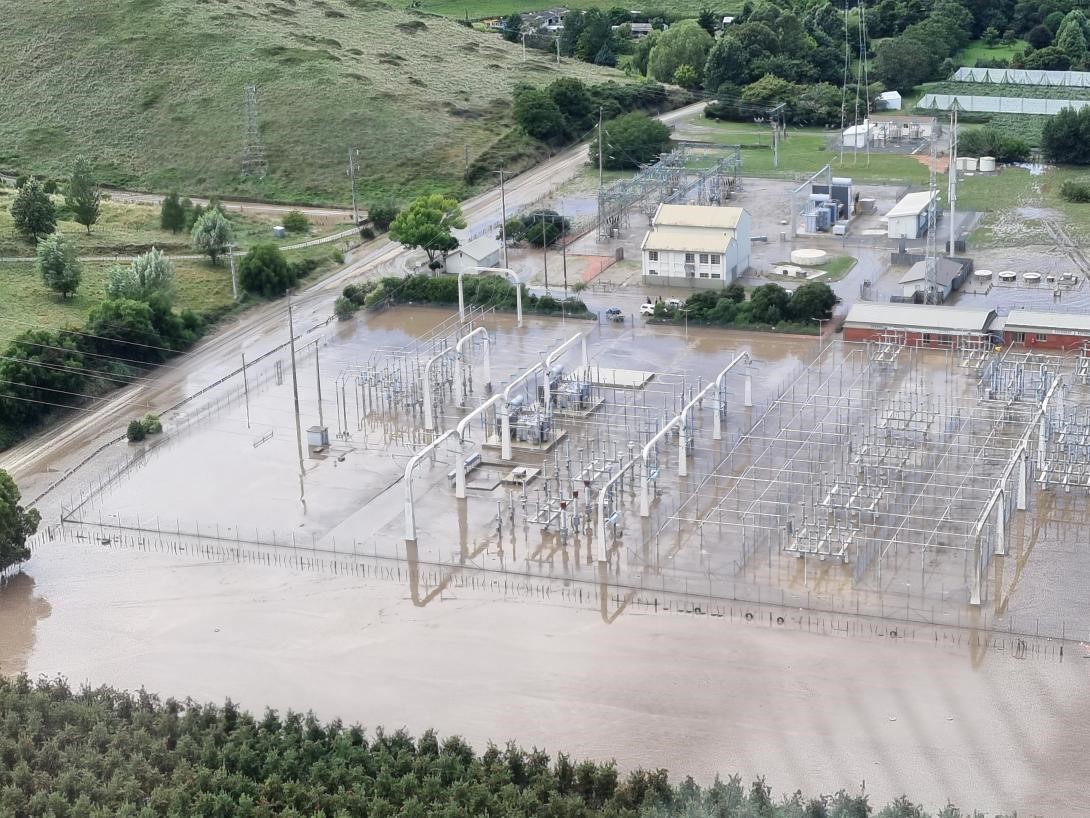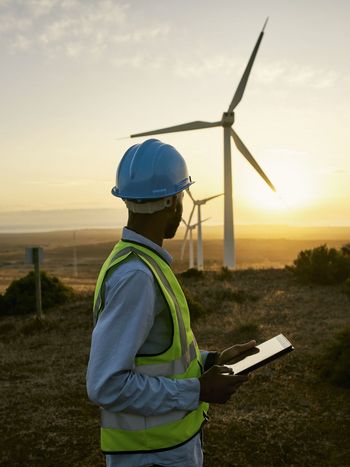New Zealand’s catastrophic flooding and cyclone damage; Recovering and building resilience
In January and February 2023 the northern parts of New Zealand experienced extensive and serious flooding from an unprecedentedly wet summer with rainfall in the Auckland region exceeding five times its normal level. Critical infrastructure was destroyed and there was significant rebuilding in the following months. In June at the annual NZ.A2 meeting there was a series of talks about how the utilities recovered, and how transformer systems could be made more resistant to future events. In this article an overview is given about the key points and perspectives given by the group.
by Dan Martin, Thomas Wang, Russell Watson, Jon Brown, Lindsay McPherson, Nishan Sooknandan, Oliver Pronk, & Mark Cozens
Following heavy rain over the New Year, ex-cyclone Hale made landfall in early January bringing more rain and causing flooding in the northeast. On the 27th, in the Auckland region, in what was described as a 1-in-200-year event an entire summer’s worth of rain fell in a single day according to our national climate centre, NIWA. This caused the worst floods in Auckland’s modern history and numerous landslips. Further intense rain caused more flooding at the beginning of February. Two weeks later ex-tropical cyclone Gabrielle brought extreme rainfall and gale force winds to the northwest, causing further river flooding, wind damage and a storm surge, and resulting in a national state of emergency [1], [2]. With the ground already waterlogged the further rain caused hundreds of land slips, which closed many roads, and many bridges were destroyed by river flooding and debris. Gabrielle was one of the most intense storms to have passed near NZ since at least 1950 [2]. Critical infrastructure was severely damaged with one estimate of repair by the finance minister being NZ$13 billion [3]. The need to adapt infrastructure to be resilient for further climate change is being actively discussed [4], [5], which is being reflected upon during the rebuild.
Damage and recovery
In the Hawke’s Bay region the main 220 kV transmission supply is fed through a hub at Redclyffe substation. This and several zone substations were seriously damaged by fast flowing water and debris such as trees crashing into buildings. Once the flooding had subsided there was a lot of mud which made access difficult, slowing down access. This mud was suspected to be contaminated with raw sewage, requiring the use of PPE which slowed down recovery even more. Other areas experienced fast flowing water but little mud. Thus, the topology of the area needs to be considered when designing the substation.
Some substations had been designed for flood mitigation either by raising assets and instrumentation to over 2.5 m, or by ensuring entrances to buildings are watertight. An example of this is Transpower’s Wairau Road substation in Auckland which continued to operate during the flood. There was a noticeable difference between these substations and the unraised ones when it came to recovery. As a solution to other flooded sites, a combination of relocation to higher ground and elevation is being proposed as a more resilient solution, where the buildings are to be 2.5 m higher than the level of the current site. Last year, in Australia there was a similar flood in a substation. The transformers had been raised 1.2 m for a one-in-a-hundred-years flood. However, they were still submerged three metres deep for 24 hours. This called for a review of flood likelihood.

Redclyffe Substation
In Hawke’s Bay some supply was quickly restored by re-routing power via the 110 kV system, backfeeding through the remaining operational zone substations. This required a change to protection settings and the readying of an operational sequence to permit the power to flow in the opposite direction than normal. Increased generation from the local Tuai hydro was used to supply parts of the 110 kV system. The damaged Redclyffe substation was bypassed several days later to enable further restoration of the main 220 kV network.
Where transformers had been flooded their tanks remained sealed, although some of their peripheral parts were damaged by mud and corrosion from being submerged for several days. The OLTC control mechanisms were under water and required cleaning and repair, and in two cases the OLTC cubicle required total replacement because of extensive corrosion. Relays and terminals were replaced. Monitors required replacement, fan motors had to be re-wound and pumps had to be checked to confirm dryness. Protection and communication systems were flooded which was an issue for reenergising transformers, especially when their condition after the flood was uncertain. Some breathers were found to have been mounted lower than they should have been so that the water level was above the breather. Water did enter the conservator tank in the two transformers at Transpower’s Redclyffe substation, but this was found to be minor at only a few litres. The water did not enter the main tank, one transformer was drained while in the other the sealing bag provided a barrier. Testing the insulation condition showed that the internal water was still low. Dissolved gas analysis did not indicate an obvious fault.
Transmission towers and distribution poles toppled where the soil had become unstable, and there was a cascading collapse. These poles were installed in the 1960s, demonstrating the rareness of this event.

Resilience
Concepts which came out of the talks were:
Some utilities are investigating flood modelling using different climate change scenarios to plan investment and adapt the substation. Changes to substations are costly, therefore, ideally, we want to only make changes once. This fits into current guidance by University of Auckland to “Acknowledge existing climate change prediction models and utilise them, looking into all possibilities of risk under different emissions scenarios, and updating anticipated risk levels accordingly” [4]. Identifying a minimum height to place assets is complicated by uncertainty about future rainfall. Substation assets are long-life items, so it pays to consider the impact of climate change many decades into the future. It is obviously more cost effective in the long run to move assets once than continuously update height. In one serious flood the water level exceeded the current one in a hundred-year estimate. Consequently it is worth investigating other likelihood scenarios.
Several actions are planned to mitigate future flood damage. Vegetation is to be proactively cleared to avoid its being washed down as debris in a future flood and causing damage. Internet connectivity will be improved for communications during these events. Asset specifications will be updated so that control or marshalling boxes have sealing which will keep the internals dry even when submerged for several days. Equipment waterproofing IP requirements are being changed. Previously the requirement was just for rain-proofing whereas now the ability to be fully submerged is required. Transformer auxiliary equipment is now being raised up, for when flooding happens again. Examples include remounting the OLTC drive box and links into the transformer and raising the control cubicles to protect monitors. Fault and outage management should be better coordinated with civil defence, for instance strategic location of solar, battery or diesel generators. Parts of the network could run as self-sufficient microgrids by making it easier for the locals to connect generators to the LV, such as in farms and dairy.
The NZ.A2 group shares our experience with this extreme weather event and our thoughts on future mitigations to contribute to international discussion of disaster management. About two thirds of our population lives in an area prone to flooding, and this is our most frequent disaster [6]. Extreme heavy rainfall is expected to become more frequent by a factor of up to four [6], so it will pay to incorporate resilience now into rebuilding.
Contributing to these talks and write-up were the following CIGRE members:
Dan Martin is a senior engineer at Essential Energy, AU. He is the convener of the NZ.A2 transformer panel and the NZ Treasurer.
Thomas Wang is an engineer at Powerco, NZ. He is an NGN member, the CIGRE NZ Secretary, and co-chaired this session.
Russell Watson is a principal engineer at Northpower, NZ.
Jon Brown is a principal engineer at Transpower, NZ.
Lindsay McPherson is an engineering manager at Essential Energy, AU.
Nishan Sooknandan is the engineering planning manager at Top Energy, NZ.
Oliver Pronk is a substation design engineer at Powerco, NZ.
Mark Cozens is the asset analysis and solutions engineer technical lead at Unison Networks, NZ.
References
- NIWA National Climate Centre, February 2023 Monthly climate summary, 3/3/23
- NIWA National Climate Centre, Summer 2022-23 Monthly climate summary, 3/3/23
- TVNZ, Cyclone will have 'multi-billion dollar price tag' – Robertson, interview 19th February 2023
- R. H. Donaldson, Resilience requires “revolutionary changes”, EG magazine, Engineering NZ, 12th June 2023
- Engineering NZ, Engineers’ stories – Simon Carter, 16th June 2023
- Royal Society Te Apārangi, Flooding, no date


